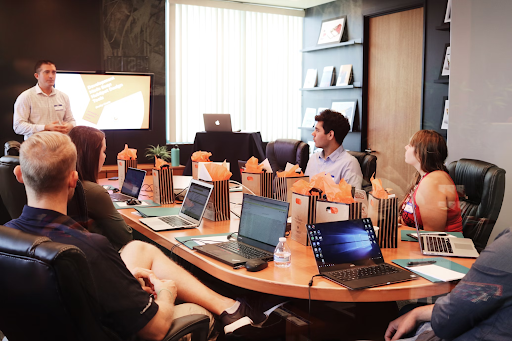
Spaced Repetition and gamification in health and safety training
Health and safety training is essential for all companies involved in high-hazard industries, but how effective is it? Problems can arise when trying to choose the right techniques to impart different kinds of knowledge.
First and foremost, you must schedule time for training to take place. Managers can be reluctant to take employees away from their duties to attend a training course. The passive nature of most corporate training courses, where a teacher / student scenario can lead to limited employee involvement, reducing the effectiveness of the learning experience.
Rapid changes in technology, corporate policy or regulations can make it hard to adapt and prepare training materials for employees to learn from. Even if this obstacle is overcome, employees may feel overwhelmed by too much information, which will not find its way into their long-term memories.
In spite of these challenges, there are other modern training methods that might enhance staff competency still further.
The latest cognitive research also suggests that mnemonic techniques can take advantage of the way the mind and brain give precedence to memories that have been repeatedly encoded over a prolonged period of time. This is known as Spaced Repetition, graduated intervals, or expanded retrieval and exploits the psychological spacing effect.
At Wranx, we use Spaced Repetition within our platform in the form of Drills made up of 10 questions per day. The learner’s responsibility is to select how well they knew this information by selecting one of the 6 options, Nailed it through to Failed it. From this, our algorithm will use the learner’s response and schedule a point in time to repeat the question again, fully utilising the spacing effect.
Alongside Spaced Repetition, the concept of gamification can add even more interactivity and ownership into the mix for a truly immersive experience.
Gamification is the practice of integrating game mechanics and elements in a non-game context. From a training perspective, this could involve adding points, badges and a leaderboard to an e-learning course. This provides learners with a much more compelling, engaging and memorable experience.
Several other reports and research have looked at gamification for teaching purposes, such as ‘The Gamification of Learning and Instruction’ by Dr Karl Kapp, who says: “the future of e-learning cannot be boring courses lacking engagement or emotional response. Instead they need to be interactive, engaging, and full of passion and enthusiasm. In short, the future of e-learning must include games and gamification.”
Spaced Repetition and gamification can give employees power and flexibility over their learning experience, and the same goes for employers too. E-learning allows organisations to add their own subjects or skills to the training solution with minimal effort or upheaval. So, for health and safety training, the entire workforce can continually receive instantly updated training materials.
At the same time, employers are also given useful insights into the learning progression of employees thanks to in-depth reporting tools. Managers can receive feedback on issues such as enrolment and activity and value metrics such as cost and time saved.
As an example, London Underground (LU) wanted to educate its staff and contractors about its latest health and safety guidelines. Owing to the fact that employees operate in very remote conditions in strict time windows throughout the night, finding the time and locating the facilities for training was an ongoing issue.
To overcome this, LU worked with a creative design agency to produce training materials.The resulting deck of playing cards featured memorable, bite-sized health and safety facts for members of staff to play with and learn from. These were organised into four suits: healthy eating, sleeping, leisure time, and staying alert. The idea borrowed the game mechanics of ordinary playing cards but adopted an educational twist, resulting in a 70% increase in engagement and understanding compared to previous employee surveys.
Not all high-hazard industries will want to implement this kind of strategy, but it just goes to show what is possible when Spaced Repetition and gamification are used for training purposes.
Originally published on HazardEx - www.hazardexonthenet.net


